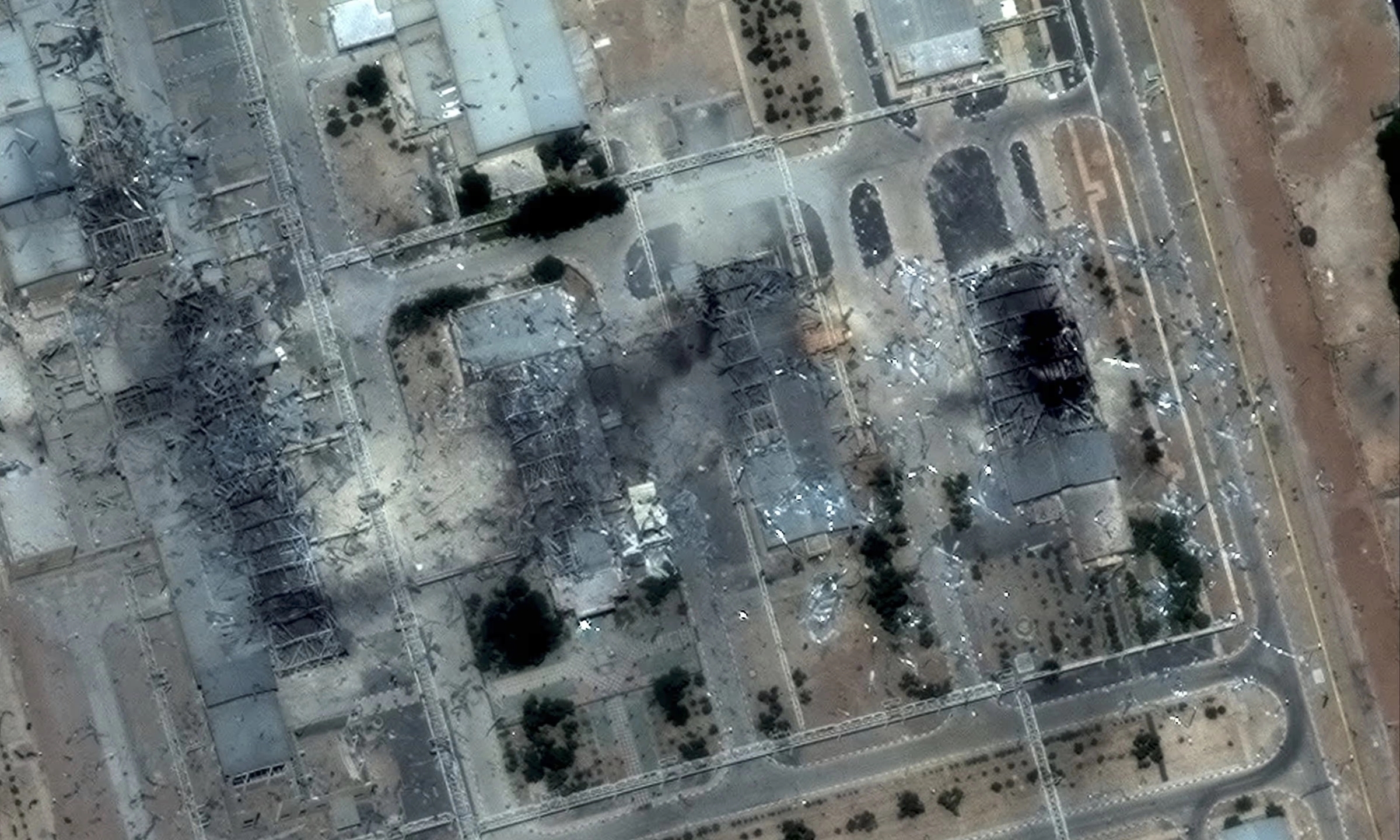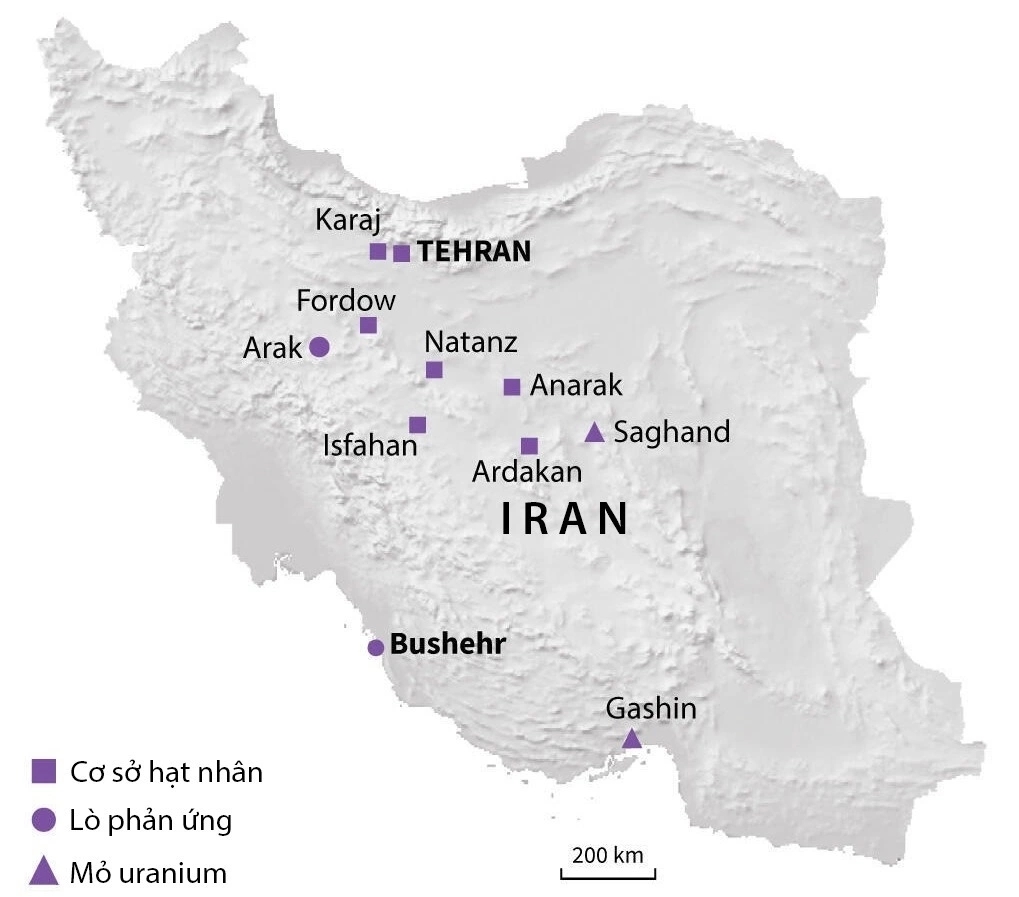NBC reported on 17/7, citing unnamed current and former US officials, that the June airstrike on Iran's Fordow nuclear facility was successful, potentially halting uranium enrichment there for up to two years.
However, these officials acknowledged that the attack did not inflict similar damage on the other two facilities, Natanz and Isfahan. "These facilities could continue enriching uranium in the coming months if Iran chooses to do so," one source said.
 |
Damage at the Isfahan nuclear technology center, Iran, on 22/6, following the US airstrike. Photo: Maxar |
Damage at the Isfahan nuclear technology center, Iran, on 22/6, following the US airstrike. Photo: Maxar
According to sources, this assessment has been shared with several US lawmakers, Pentagon officials, and Washington's allies in recent days.
Sources revealed that Central Command (CENTCOM), which oversees US military operations in the Middle East, had initially developed a more comprehensive plan to strike Iran. This plan involved attacking all three nuclear facilities over several weeks, rather than in a single night.
President Donald Trump was briefed on the plan. However, he rejected it because it contradicted his foreign policy of withdrawing the US from foreign conflicts, rather than escalating involvement.
"We were prepared to do whatever was necessary, but the president didn't want to do it," the source said.
"As the US president has stated, and as experts have verified, Operation Midnight Hammer completely eliminated Iran's nuclear capabilities," White House spokesperson Anna Kelly said when asked for comment.
"President Trump has made it clear, and the American people understand, that Iran's nuclear facilities at Fordow, Isfahan, and Natanz have been completely obliterated. There is no doubt about it," Pentagon spokesperson Sean Parnell said.
 |
Locations of the three Iranian nuclear facilities: Fordow, Natanz, and Isfahan. Graphic: AFP |
Locations of the three Iranian nuclear facilities: Fordow, Natanz, and Isfahan. Graphic: AFP
In the early morning of 22/6, the US Air Force deployed a squadron of seven B-2 stealth bombers to drop 14 GBU-57 bombs on targets in Iran. Twelve of these targeted the Fordow uranium enrichment plant, often described as Iran's "nuclear fortress," while the remaining two struck an underground facility at the Natanz nuclear site.
Satellite images taken after the airstrike showed craters at both the Fordow and Natanz complexes, but the extent of the damage and the effectiveness of the GBU-57 bombs remain unclear.
Last month, US media, citing preliminary assessments from US defense intelligence agencies, reported that the attack only set back Iran's nuclear program by "a few months." However, Trump administration officials deemed this assessment to be of low confidence and claimed the program had been delayed by "several years."
Ngoc Anh (According to Reuters, NBC)












